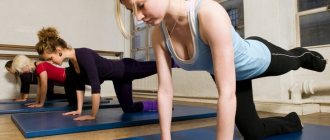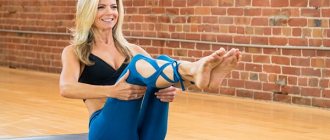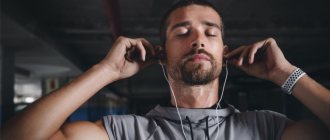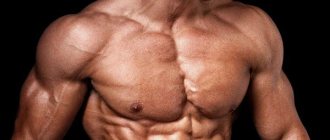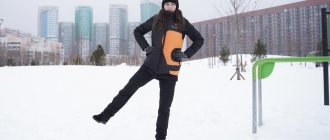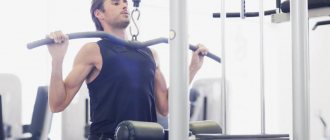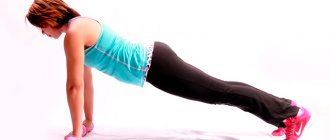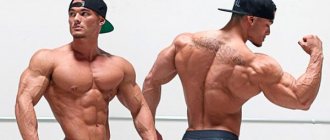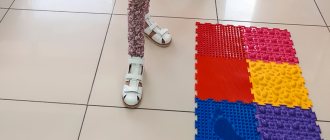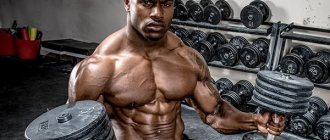You've probably heard about Pilates - famous singers and actors from all over the world practice it, and your nearest fitness center definitely has a special room and trainers for this system.
But few people will say exactly what the essence of Pilates is and how it differs from regular fitness. Is it true that it is similar to yoga? Is it difficult to do it? Who is it suitable for?
World and European synchronized swimming champion, Honored Master of Sports, current Pilates and yoga instructor (20 years of experience in the fitness industry) Natalia Gruzdeva .
Pilates appeared more than 100 years ago
The inventor of Pilates, Joseph Pilates, was born in 1883 in Mönchengladbach, Germany. Joseph grew up as a very sick and weak boy, suffering from asthma, rickets and rheumatic fever. His father Friedrich, who was involved in gymnastics and weightlifting, believed that healing could come through physical activity. And it really helped - by the age of 14, Joseph became strong and practically forgot about his old illnesses. His body became so perfect that the boy was even invited to pose for an anatomical atlas.
Pilates fell in love with sports: he did martial arts, yoga and gymnastics. Joseph stayed in Germany until he was 32 years old, working as a physical education coach at a local school. In 1912, he moved to England, where he made a living in every possible way: he performed in the boxing ring, was a circus performer, and even taught self-defense to Scotland Yard detectives.
At the same time, Joseph begins to develop his own system of exercises. He understands that physical activity alone is not enough for the full development of a person; a spiritual component is also needed, therefore he combines exercises with the philosophy of martial arts and meditation.
During the First World War, Pilates helped wounded soldiers in hospitals in England, while simultaneously trying out his own training system. He even equipped some beds with special springs that were attached to the wall. And thanks to the Pilates system, fighters recovered from injuries much faster.
In 1926, Joseph moved to the United States and opened his own studio in New York. His training system quickly became popular - so much so that ballet, dance, theater and film stars began to appear in his studio.
Gymnastics, of course, was not something new for anyone. What attracted people to the invention of Pilates was something else – the combination of physical exercise and a whole philosophical system.
Why it's worth a try
Pilates develops flexibility
Photo: Wavebreakmedia / Depositphotos
While your body is young and flexible, you don’t notice it: any movements seem simple and natural. However, over time, due to age, sedentary work or injury, flexibility can deteriorate to the point where it begins to reduce quality of life.
Stretching, resistance exercises, strength movements and breathing techniques all increase flexibility in Pilates.
However, it is not necessary to practice every day. ResearchJ. A. Kloubec. Pilates for Improvement of Muscle Endurance, Flexibility, Balance, and Posture / Journal of Strength and Conditioning Research found that doing Pilates for just two hours a week for 12 weeks significantly increased the flexibility and endurance of its participants.
Pilates increases strength
People who do strength sports will find it funny to see this fact about Pilates. How can gentle exercises without weights increase strength in heavy bench pressers?
Actually it can. Past injuries, sedentary work, uncomfortable posture during sleep - all this causes our body to get used to an unnatural position and reduces the efficiency of movements, leading to poor posture and pain.
Pilates helps return your body to its natural position, which directly affects strength. The body begins to move in the most efficient way and strength increases.
Pilates can also help you regain strength after an injury. Exercise develops healthy muscles and prevents injured ones from becoming scar tissue, which increases range of motion and speeds recovery.
Pilates develops core muscles
The core muscles cover the body in several layers and are involved in every movement you make. They are responsible for maintaining balance and stabilizing the body, which is of great importance for preventing injuries both in sports and in everyday life.
ResearchK. CH Bliven, BE Anderson. Core Stability Training for Injury Prevention/Sports Health proves that developing dynamic and static stability, core activation, and neuromuscular control helps prevent sports injuries.
In Pilates, much attention is paid to creating a strong body. Any exercise begins with the activation of the stabilizing core muscles, due to which they quickly become toned. This is one of the many reasons why athletes often do Pilates during recovery.
Pilates is safe during rehabilitation
Properly carried out rehabilitation is the key to an athlete’s speedy return to training.
Since Pilates puts little stress on the body and can be adapted to suit people of all abilities, this system is great for maintaining activity during the rehabilitation period.
In addition, an injury can depress an athlete not only physically, but also mentally. Pilates will help you cope with this too. The system allows you to clear your mind of negative thoughts and emotions, at least during training.
Pilates improves blood circulation
Since blood supplies all organs and systems with oxygen and nutrients, normal circulation is essential for the health of the entire body. Impaired blood circulation can cause numbness, fatigue, dizziness, hair loss, swelling, and skin problems.
Pilates has a positive effect on blood circulation in two ways:
- It improves during training, like any other system of physical exercises.
- Returns the correct position of the back, due to which blood flow increases and blood pressure decreases Posture and Breathing and Circulation / Spine and Health.
Pilates improves breathing
If, due to poor posture, the diaphragm is constantly depressed, you begin to breathe shallowly. The body lacks oxygen, you breathe faster and spend more energy. Pilates stretches the core muscles, improving posture and allowing deeper breathing.
Moreover, by consciously inhaling and exhaling during training, you change the very habit of breathing, which has a positive effect on strength, endurance, and efficiency of movements.
Pilates teaches mindfulness
Photo: Wavebreakmedia / Depositphotos
The practice of Pilates trains mindfulness in itself. To perform a movement in the most efficient manner, the mind must operate in close connection with the body.
When you get used to being aware of your movements in class, you will do the same in everyday life. Your movements will become more graceful and you will be able to maintain your balance better. This is especially helpful in winter, when the risk of falls and related injuries increases. In general, this skill will be useful to you in any life situation, for example, in a crowded subway or bus, when you have to literally stand on one leg and maintain your balance during sudden movements of traffic.
Pilates reduces stress
Stress triggers the body's fight-or-flight response, increasing heart rate, adrenaline and cortisol production, and inhibiting digestive function. If the body remains in a state of stress for a long time, it leads to diseases of the digestive system, emotional and mental problems and other ailments.
Pilates helps to effectively combat stress. One of the key factors in this system is breathing control. By concentrating on your breathing, you learn to be in the present moment, feel your body and calm your mind.
ResearchJ. I. C. Ugarte, A. G.P. Arrillaga, OM Cabo Gonzalez. Efficacy of the controlled breathing therapy on stress: biological correlates (preliminary study) / Revista de enfermeria confirm that breathing practices help reduce the level of cortisol - the stress hormone - and even protect the body from the destructive effects of free radicals D. Martarelli, M. Cocchioni, S. Scuri, et al. Diaphragmatic Breathing Reduces Exercise-Induced Oxidative Stress / Evidence-Based Complementary and Alternative Medicine.
Pilates teaches you to feel your body better
We are accustomed to not paying attention to our body, so we do not notice poor posture, muscle imbalance and other problems until pain tells us that it is time to take charge of our health.
Pilates teaches us to always stay in touch with our body, to feel what is happening to it. During classes, you will have to concentrate on the work of each small muscle that makes you move. This will form the habit of always monitoring your body and feeling how well it is functioning.
Pilates prevents sports injuries
The main causes of sports injuries are poor exercise technique, too much stress on joints, muscles and tendons, poor posture and weak body muscles. Pilates will help solve these problems. It increases strength, helps develop a sense of balance, teaches you to concentrate on your body and monitor the efficiency of its movements, so that the athlete will pay more attention to technique.
In addition, Pilates uses muscles that are rarely used during normal movements. Working out these muscles allows you to evenly distribute the load throughout the body, making your joints stronger, more mobile and ready for stress during regular workouts.
Pilates improves cognitive abilities
One study, Yoga Improves Brain Function More Than Aerobic Exercises / Medical News Today, found that 20 minutes of yoga improved cognitive performance more than either aerobic exercise or inactivity.
Scientists have suggested that cognitive enhancement comes from increased mindfulness from meditation exercises and a reduction in stress and anxiety.
Pilates has all the same body control and mindfulness benefits as yoga. Therefore, by reducing stress and learning to be mindful of your body, you can increase your cognitive abilities.
Pilates helps fight insomnia
Controlling your breathing, focusing on your body, and calm Pilates exercises will help you relieve stress and improve sleep. Study maps types of physical activity associated with better sleep / ScienceDaily. You can do the exercises right before bed as a daily calming ritual.
Pilates is not just a workout, but also its own philosophy
Pilates himself called the developed system controlology - from the word control, since the main thing in it, according to Joseph’s idea, was precisely control over one’s body and mind. Pilates believed that “the body is created by the mind” and without proper psychological preparation there is practically no point in physical exercise.
In his opinion, one of the biggest problems of modern man is that he is completely unable to control his mind. The brain works as if on its own, thoughts come and go, and the person not only cannot follow it, but does not even try. But if you combine physical training and mental training, if during gymnastics you concentrate on the part of the body on which the exercise is performed, the result will be incredible.
Pilates was confident that the human body has enough resources to heal almost any injury and disease, we just don’t use it because we don’t know how.
At the same time, Pilates did not have a clear system of physical training. Joseph developed 34 gymnastic exercises, but did not force anyone to do only them - people were free to choose for themselves how to load their own body. The essence was precisely in the approach to training, the combination of psychology and physical work, and a certain attitude towards preparation in general.
Natalia Gruzdeva: “Pilates is, in principle, about effective movements. We do not control the mind through physical exercise, but through intelligent movement we perform the exercises with full efficiency.
How much stability is needed, how much mobility is needed - we do exactly as much as a person needs for him to function, live, be healthy, active and perform not only everyday tasks, but also engage in any other sports.”
But the term “controlology” never came into use and was quickly forgotten. And the Joseph Pilates exercise system is now known throughout the world under the name of the inventor - Pilates.
Contraindications for Pilates fitness practice
In order not to harm your health, you should stop exercising if:
- colds and flu when the body temperature exceeds 37.5 degrees. When you have a fever, coordination of movements decreases, and you can get injured while performing the exercise;
- tumors, especially in the bones. Neglecting this contraindication risks fractures and progression of the disease;
- muscle tears, untreated fractures. Pilates helps to recover only in the presence of healed injuries;
- spinal injuries, third degree flat feet, scoliosis;
- people with mental illness will find it difficult to perform exercises measuredly;
- risk of bleeding.
These contraindications are general, so you should consult a doctor before starting classes.
Fans of active recreation will love the idea of spending their vacation in a way that not only relaxes their souls, but also improves their health and tightens their muscles. Pilates is practiced on fitness tours, which are already loved by a large number of people. Professional trainers will accompany the trainees throughout the tour, help with exercises, and select the optimal training schedule. After completing the tour, everyone will be able to independently perform a set of exercises.
What is its essence?
Pilates is a comprehensive system of body development based on gymnastics, yoga, tai chi (a type of wushu) and several other eastern traditions.
The essence of Pilates is dynamic exercises without overexertion, performed at a slow pace along with breathing exercises and mind control. The movements are performed gently, without sudden changes in exercises.
Pilates has six basic principles:
• Concentration – focusing deeply on your body during exercise. While performing the exercise, you need to concentrate on the muscle you are working on.
• Centering – special attention to the center of the body, which means the muscular corset, rectus and transverse abdominal muscles. Exercises are performed with a tucked stomach and a straight back.
• Control – constant concentration on the correct execution of exercises, monitoring your thoughts, body position and posture.
• Breathing – breathing control. One of the most important principles of Pilates. You need to inhale as deeply as possible and slowly exhale completely.
• Precision – exercises should be performed exactly as needed. There is no point in doing more, trying to pump up the body faster. Relaxation will not produce the desired result either.
• Smoothness – all movements must be performed slowly and smoothly, fluidly. You can’t rush, it’s important to feel how the muscles work, make them work as hard as possible, but not overexert yourself.
The most important thing in Pilates is strict adherence to all six principles. If you forget even one, then the whole technique will collapse and will not work as it should. Otherwise, it will just be fitness with Pilates elements. Self-control and discipline are the basis of success.
Regular training is also important. Single exercises will not give an effect, you need consistency.
Basic exercises and their technique
Press and core
"A hundred"
From a lying position on the floor, pull up the anterior abdominal wall, raise your neck and upper back and perform 5 pulsating punches in the air, as shown in the video, turning your arms in the air. A beginner’s feet can either stand on the floor or come off the floor (the second option is more difficult).
Table top
From a lying position on your back, you need to alternately bring your knees to your chest, slightly twisting your pelvis while exhaling. The exercise has several levels - more advanced ones bring both knees at once. The lower back should be pressed to the floor in all variations of the exercise. This is achieved by contracting the transverse muscle and retracting the abdomen.
Reverse twist
From a supine position, the pelvic bones are brought to the lower ribs due to contraction of the rectus abdominis muscle. Swinging your legs is not allowed.
Roll up
This exercise is similar to sit-ups. Performed from a lying position on the floor on your back, arms and legs extended. The stomach retracts and tenses, you need to slowly raise the upper part of the body, without lifting your legs, and reach your toes with your hands. The reverse movement is also controlled.
Exercises for back muscles
“Boat”
Starting position: on your stomach, face down. As you exhale, straight, outstretched arms and legs are lifted off the floor. This position is held for several seconds and lowered down.
Exercise for the back and buttocks
From the starting position lying on your stomach, alternately lift your opposite arms and legs up, similar to the “boat”.
"Swimming"
This is a hybrid of the “boat” and the previous movement. You need to reach the top position of the boat, contract the back muscles and alternately perform lifts of opposite legs and arms. In this movement, you should pull back your toes and stretch them and your fingers in the opposite direction.
Muscles of the thighs and buttocks
Swing forward from a side lying position
Take a stable position on your side, fixing the center of your body. Swing forward and return your leg to a neutral position. In this case, the body does not fall back and forth; stabilization occurs due to the tension of the press.
Gluteal Bridge
The movement is technically significantly different from the fitness version. The goal here is not only to tighten the gluteal muscles as much as possible, but also to lift the pelvis and lower it, moving vertebrae by vertebrae, that is, gradually lifting and laying the pelvis. The feet can be placed a little further from the buttocks or closer to achieve more or less engagement of the hamstrings.
"Shell"
Legs bent at the knees; from a position lying on your side, you need to lift the knee of your upper leg up along an arcuate path. The movement is reminiscent of the opening of shells, which is why it got its name.
Hip movement back on hands and knees
The movement can be performed with or without a ball. In the second option, the knee of the working leg is bent at a right angle. Due to the contraction of the gluteal muscle, the heel is raised up and further lowered under control.
Important: exercises are performed for 5-12 repetitions in a slow, controlled style, synchronized with breathing.
What does Pilates develop?
Regular Pilates classes strengthen the entire body, develop muscle corset and help recover from injuries.
Benefits of Pilates:
• Increases body flexibility.
• Increases strength.
• Develops the muscular corset (core), which helps prevent injuries.
• Improves blood circulation.
• Improves breathing, increases lung capacity.
• Teaches you to feel your body, control your thoughts and mind.
• Helps fight stress, improves sleep.
• Restores muscles and body after injury, which is especially important for athletes.
Natalia Gruzdeva: “How much can Pilates help with recovery from injury? Much. Many issues are resolved with the help of effective movements, especially after injuries and operations, where adequate motor activity was impaired.
As a professional athlete and coach, I have encountered both ballerinas and football players who felt better after Pilates because the movements took on a completely different form.
I can also say about myself that after leaving big sport there is always a baggage of professional ailments. And as soon as Pilates appeared in my life, many issues with long-term injuries went away along with the training.”
Physiological effect on the entire body
The benefits of Pilates for the body have been proven. The mystery still remains unsolved as to why it is possible to become noticeably younger with consistent exercise. Perhaps this effect can be achieved due to measured exercises, stretching and proper breathing, because people who practice martial arts look much younger. Regular exercise also normalizes blood circulation and blood pressure. There are also special indications for Pilates:
- It is recommended to engage in this fitness practice for school-aged children who spend a lot of time sitting.
- For teenagers with hormonal activity and active growth, this technique will help get rid of pain that occurs in joints and muscles.
- People with obesity, which is accompanied by shortness of breath and muscle weakness. Pilates will help to steadily and evenly reduce fat deposits under the skin and gently remove it from internal organs.
- People over 40 years old benefit from this fitness practice. It will help maintain and increase muscle tone and normalize blood circulation.
- Pilates is beneficial for those who suffer from migraines. It will not be possible to completely get rid of it, but it is possible to reduce pain and prevent attacks.
- The technique allows you to quickly recover from injuries and long-term illnesses.
- Pilates is useful for diseases of the musculoskeletal system.
Do you need exercise equipment?
Training takes place both with the use of special simulators and without them.
Pilates itself developed a number of machines called GRATZ, which are still manufactured in the USA to this day. In many ways they resemble those beds with straps and springs that Joseph made for wounded soldiers in England.
Natalia Gruzdeva: “In the Pilates system, exercise machines are not those machines that provide some kind of resistance, but, on the contrary, give feedback. Due to the fact that we perform exercises with them, we receive feedback for our nervous system so that our movement itself is more intelligent and effective.
The machines in Pilates are different from those on which we pump biceps, triceps, and so on. There are different tasks here. When there are simulators, it’s great, it’s an addition, our ally and assistant in more effective development. But if there are no machines, then there is a whole system of Pilates on mats.
Benefits for the back
Without exaggeration, Pilates can be called the most useful form of fitness for the back. Exercises day after day strengthen the muscles that support the spine and normalize its functioning.
Classes according to the Pilates training program return the spine to the physiologically correct position, gradually improving blood circulation in the intervertebral discs, freeing nerve endings that have been compressed for years. Lesson after lesson, back pain decreases and many health problems disappear.
Maybe it's too simple?
In fact, Pilates is much more complex and difficult than it seems. This is not just gymnastics on mats - Pilates exercises are aimed primarily at developing deep muscles, which in humans are most often either weakened or overstrained.
Therefore, working on these muscles requires a lot of effort - not even every professional athlete will be able to perform all the Pilates exercises on the first try.
Natalia Gruzdeva: “Is Pilates easier than fitness? These are different approaches. You can’t compare which is easier – swimming or running. Everywhere there is some kind of load. These are different types of training. The body must develop harmoniously. Nobody says that you need to do either fitness, or sports, or exclusively Pilates. Pilates is the program that allows you to more and better reveal the possibilities of standard fitness.
I myself have encountered the fact that when people engage in only one type of activity, their body acquires a certain standard set of habits - to do only this and use only this set of muscles.
And when they come to a different training model, it becomes difficult for them because their body is not used to using a new set of muscles and movements. The body adapts for a while, then it becomes easier.
But there are people for whom Pilates is not suitable at all, but this is not due to difficulty, but to the fact that they are not used to doing something slowly and thoughtfully; it is easier for them to get on a treadmill and run 10 thousand kilometers at full speed.”
Is it possible to exercise while pregnant?
If the pregnancy proceeds without complications and there is no ban on gymnastics, a special program is chosen depending on the trimester. Such exercises strengthen muscles, prepare for childbirth and allow you to quickly restore your figure after it.
Important: general club lessons are not intended for pregnant women. They include movements that involve pressure from the anterior abdominal wall on the fetus. Loads of this format should be excluded.
After childbirth without complications, you can begin training according to postnatal programs after 8-12 weeks. Deviations in one direction or another in time are possible; this issue must be resolved by a doctor.
Is it necessary to work with a trainer or can you do it on your own?
Initially, you need to practice only under the guidance of a trainer, since it is very difficult to independently follow all the principles of Pilates at first. Inevitably there will be mistakes and classes will not lead to the expected result.
The trainer will monitor the correctness of the exercises and create a suitable training program.
Natalia Gruzdeva: “A coach is not someone who does for a person or simply watches him lie on the mat. The trainer sees how a person performs movements and tells him a set of points with which he will achieve the most effective result.
In addition, the trainer conducts diagnostics for any beginner - looks at his effective movements in various variations, mobility in the joints. And based on this, he already understands what exercises this client should have.
And in Pilates there are only 150 basic exercises, plus each exercise has variations. A person can’t do everything in one workout, can he? So, deciding what the training of a particular person should consist of is precisely the task of the coach. It solves the problem of efficiency and achieving the goals that the client needs.”
Is it possible to study at home?
Training at home is permissible using “matwork” programs, that is, in the format of “classes on the floor.” The technique is learned from video and strives to be completely repeated. They monitor the condition independently, trying to eliminate pain and discomfort. Home exercises are no less effective than club exercises if a person can monitor and regulate his condition.
Recipes for healthy eating
Classic potato salad
- 2.8 g Protein
- 6.2 g Fat
- 15.6 g Carbohydrates
- 135.5 kcal
35-45 min.
- #bell pepper
- #dietary
- #yogurt
- #potato
- #low calorie
- #dinner
- #olive oil
- #dinner
Other recipes
Who can do Pilates? Are there any restrictions?
Pilates is one of the gentlest and safest types of training. Due to the slow execution of movements and the lack of work with additional weight, it is almost impossible to get injured.
Pilates is equally suitable for both women and men, there is absolutely no difference.
Natalia Gruzdeva: “Absolutely everyone can do Pilates. I wouldn't say there are any restrictions here. But people can have their own individual programs. This is a correction for a specific person.
For example, this is a pregnant woman. She will have limitations in a number of exercises, she will not be able to lie on her stomach, she will not be able to lift her legs over her head, but she will have a huge range of exercises that are designed for pregnant women.
This also includes people who are overweight, have limited joint mobility, or have spinal diseases. The program is always tailored to the individual. Every teacher takes an exam on contraindications before starting his career.”
The benefits of exercise for the body
Pilates classes really help to restore lost health to any person (after all, the program was developed specifically for this).
The longer and harder you practice, the more benefits you can get. After 2-3 weeks of regular training, a positive effect will be noticeable:
- flexibility and mobility of joints will increase;
- posture will improve, stoop will decrease;
- pain in the back and neck will disappear;
- the muscle corset of the whole body will become stronger;
- the functioning of the cardiovascular system is normalized;
- performance will increase;
- the body's resistance to infections will increase;
- the body will become more flexible;
- Everyday movements will become smooth and graceful.
The Pilates method will help change the body, restore harmony and balance to it. It will move the way it was intended by nature.
In terms of its health-improving effects on the body, Pilates exercises can be compared to the practice of yoga .
Regular training not only tidies up the body, but also helps increase self-confidence and resist stress. And stress, as we know, leads to excess weight, early aging and the development of cancer.
If I want a healthy and beautiful body, is Pilates enough?
Depends on the individual. Pilates evenly develops the body and helps protect it from injury, but does not burn fat (it is not suitable for weight loss) and does not replace cardio training.
But the advantage of Pilates is that it is completely compatible with any other type of fitness. Moreover, it increases the effect of other workouts, as it increases the awareness of movements and engages deep muscles that practically do not work during regular fitness.
Natalia Gruzdeva: “I can say about myself that for me, as a professional athlete in the past, Pilates is enough to maintain my body, health, develop and stay in shape.
This is all individual, of course. People with certain medical conditions may also benefit from other types of exercise. But if a person is healthy and wants to stay that way, then Pilates is enough.”
How does the Pilates fitness practice work?
This technique is not active and intensive. For a woman weighing 70 kilograms to burn 200 kilocalories, she will need to exercise for an hour on the floor, and to burn 350 kilocalories, the same amount of time will be required in the reformer. So, the calculation is this: to lose half a kilo, you will need to burn 3,500 kilocalories. Based on this, many will consider fitness practice not effective, but this is actually not the case. Pilates, affecting deep muscles, allows you to restore and speed up metabolism, strengthen and tighten muscles.
By doing Pilates, you will be able to work out the deep layers of muscles, the effect of the exercises will be without the increase in volume that occurs when pumping. By practicing this technique, the body will learn to burn fat while at rest, or when a person is engaged in everyday activities. In addition, toned muscles result in a rapid visual reduction in volume.
Therefore, when doing Pilates, you should not weigh yourself, but use a centimeter tape to measure. With consistent exercise, you will be able to get rid of one clothing size in just a month.
The best exercises in Pilates
What is included in the Pilates program? The list of exercises is selected individually for each athlete, taking into account the characteristics of the body, initial physical preparation, training goals and other parameters. The best elements in the complex that will help you quickly get your body in order:
- "A hundred".
- Crunches/reverse crunches.
- Leg raises/extensions.
- Body rotations.
- One leg extension.
- Heel touch.
- Hyperextension.
- Gluteal bridge.
- Leg raises on all fours.
- Side leg raises.
- Plank (reverse, with turns).
Interesting fact. Pilates is always a great mood and a powerful boost of energy. After a high-quality workout, you feel pleasant fatigue, which passes quickly enough, leaving positive emotions and a feeling of satisfaction from the process.
Flaws
None of the training programs have only advantages. It's the same with Pilates. If you need to lose a large number of extra pounds, this system is not the best way. To burn fat, you will have to look for another method, for example, classic cardio training.
It is worth talking about Pilates to the technique of performing exercises. This is the case when it is not the quantity, but the quality of training that is important. It is necessary to conduct at least several lessons with an experienced trainer who will tell you how to move correctly in order to work a certain area of the body.
Principles of the technique
It is important to correctly understand the purpose of Pilates, which is aimed at developing functional muscles, thereby ensuring the performance of the body as a whole. Muscle elasticity and strength are achieved by the following techniques:
- eccentric muscle contractions;
- safe increase in muscle length and flexibility;
- increasing the range of joint mobility.
Pilates does not build defined muscles like strength training. But it makes the body more mobile and flexible thanks to the development of deep muscles of the abdomen, back, pelvis, helps to train a strong abs, flexible correct posture. When these muscles are developed, the body automatically aligns, the neck and shoulders relax, and each joint fully performs its functions.
In addition, an integral part of the technique is intellectual control over physical activity, mandatory adherence to hygiene rules, and a rational sleep and wakefulness regime.
Who is Pilates suitable for?
Because Pilates can be adapted to provide a gentle strength training program or a more challenging workout, most people will not have any problems performing these exercises.
Pilates is suitable for both beginners and people who already exercise regularly.
If you are a beginner, you can start with basic exercises and then move on to more advanced ones. When you're just starting out with Pilates, it's a good idea to take a group class with a trainer or have a private instructor.
The trainer will make sure that you are doing the exercises correctly, which will avoid any injuries.
If you have not exercised for a long time, are of advanced age, are pregnant, or have health problems, then before starting exercise, it is recommended to consult a doctor.
It is not recommended to do Pilates if you have:
- unstable blood pressure;
- intervertebral disc herniation;
- severe osteoporosis;
- risk of blood clots.
